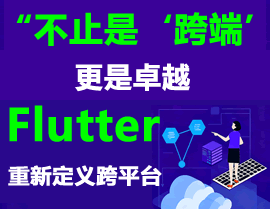uniapp如何接入原生接口
在uniapp中如何调用Android和iOS的原生接口?需要引入哪些模块或插件?能否提供具体的代码示例和配置步骤?如果遇到兼容性问题该怎么解决?
2 回复
使用HBuilderX创建uni-app项目,在manifest.json中配置原生插件路径。通过uni.requireNativePlugin调用原生模块,支持Android/iOS。需注意平台差异和权限配置。
在 UniApp 中接入原生接口主要通过 条件编译 和 插件机制 实现,支持调用 Android(Java/Kotlin)和 iOS(Objective-C/Swift)的原生功能。以下是具体方法:
1. 使用条件编译调用平台特定 API
在 UniApp 中,可通过 uni.getSystemInfoSync().platform 判断平台,并调用对应的原生 API(如 HTML5+ API):
// 示例:调用振动功能
plus.vibrate.vibrate(500); // 仅 App 端生效
2. 编写原生插件(关键步骤)
Android 端步骤:
- 创建 Module
在 Android Studio 中创建Android Library模块,实现扩展功能。 - 编写 Java 代码
继承UniModule类,使用@UniJSMethod注解暴露方法:public class MyModule extends UniModule { @UniJSMethod public void showToast(JSONObject options, UniJSCallback callback) { String message = options.optString("message"); Toast.makeText(mUniSDKInstance.getContext(), message, Toast.LENGTH_LONG).show(); callback.invoke("Toast shown: " + message); } } - 注册插件
在assets/dcloud_uniplugins.json中添加配置:{ "plugins": [ { "type": "module", "name": "my-toast", "class": "com.example.MyModule" } ] }
iOS 端步骤:
- 创建类继承 DCUniModule
使用WX_EXPORT_METHOD宏暴露方法:#import "DCUniModule.h" [@interface](/user/interface) MyToastModule : DCUniModule [@end](/user/end) [@implementation](/user/implementation) MyToastModule WX_EXPORT_METHOD([@selector](/user/selector)(showToast:callback:)) - (void)showToast:(NSDictionary *)options callback:(UniModuleKeepAliveCallback)callback { NSString *message = [options objectForKey:@"message"]; UIAlertController *alert = [UIAlertController alertControllerWithTitle:@"提示" message:message preferredStyle:UIAlertControllerStyleAlert]; // 显示 Alert if (callback) callback(@{@"result": @"success"}, NO); } [@end](/user/end) - 注册插件
在Podfile中引入模块,并确保类被正确加载。
3. 在 UniApp 中调用插件
使用 uni.requireNativePlugin 调用自定义插件:
// 在 Vue 或 nvue 页面中使用
const myToast = uni.requireNativePlugin('my-toast');
myToast.showToast({
message: 'Hello Native!'
}, (result) => {
console.log(result);
});
注意事项:
- 平台差异:Android 和 iOS 需分别开发插件,注意系统 API 差异。
- 调试:使用 HBuilderX 真机调试,确保原生环境正常。
- 文档参考:查阅 UniApp 官方文档中的 NativePlugin 开发指南 获取详细示例。
通过以上步骤,即可在 UniApp 中灵活调用原生功能,扩展应用能力。






